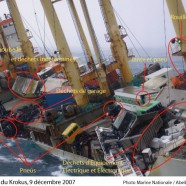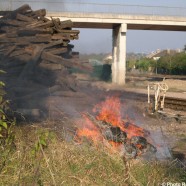Explosition of balloons in the North Channel – 2008
On the 31st of December 2007, along 2 km of the French littoral Robin des Bois collected 31 pieces of orange balloons, 28 yellow, 17 violet, 16 pink, 14 blue, 14 green, 13 white and 2 grey and 7 pieces of advertising balloons and the rings attaching numerous balloons of different colours. This outnumbers former collections and is a result of December tides and the holiday season.
Of the balloons which are let off 70 % rise to 8 km within a couple of hours and then explode. The balloons fall to the ground or in the ocean in fragments. Others deflate while ascending and land within a perimeter of around 10 square meters from where they were let off. The celebration balloons pollute the food chain and their fragments form pseudo plastic plankton which has been attested by scientists. The balloons or particles enter into the marine food webs and the digestive tract of mammals, turtles, fishes and birds. The foreshore provides for a number of birds like the Kentish Plovers and land animals like rabbits, not only do they have to sort through waste they equally have to be careful of syringes. (See photos). Litter at sea and on the shoreline is one of the issues addressed by OSPAR.
Reportage Charlotte Nithart et Jacky Bonnemains, Robin des Bois.













